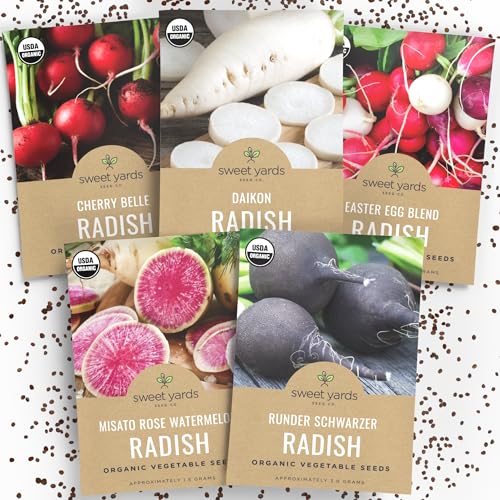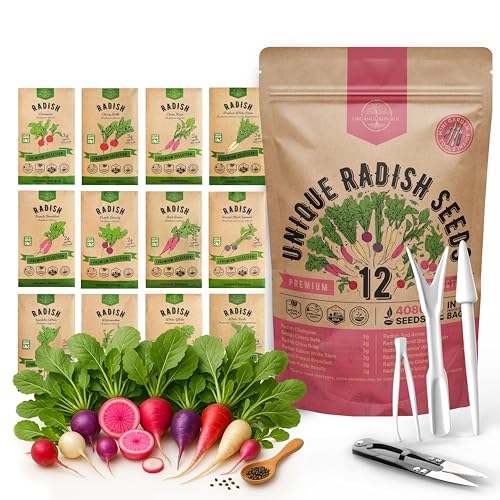Introduction
Radishes (Raphanus sativus) rank among the easiest and fastest vegetables you can grow, making them an ideal choice for beginning gardeners, experienced farmers seeking quick returns, and anyone wanting fresh produce in record time. From seed to harvest in just 25-40 days, radishes deliver crisp, peppery flavor with minimal effort and space requirements.
These quick-maturing root vegetables offer unique advantages: they require little garden space, tolerate various growing conditions, resist most pests, and provide both edible roots and nutritious greens. Whether you’re cultivating a backyard vegetable garden, managing a market farm, or growing in containers on an urban balcony, radishes consistently deliver reliable results.
This comprehensive guide covers everything you need to successfully grow radishes, from soil preparation and planting techniques through harvest timing and culinary uses. Discover why radishes deserve a prominent place in your garden and how to maximize their impressive productivity.
Why You Should Grow Radishes: 7 Compelling Benefits
Before diving into cultivation techniques, understanding radishes’ unique advantages helps you appreciate why they’re such valuable garden additions.
1. Lightning-Fast Maturity
Radishes hold the record as one of the quickest vegetables from seed to harvest.
Maturity Timeline:
- Spring varieties: 22-30 days
- Standard varieties: 25-40 days
- Winter varieties: 50-70 days
This rapid growth means:
- Quick gratification for impatient gardeners
- Fast turnover for commercial growers
- Multiple successive crops per season
- Early spring harvest when little else is ready
- Fill gaps between slower-growing crops
Market Advantage: Commercial growers can harvest 4-6 radish crops in the time it takes to grow one tomato crop.
2. Minimal Space Requirements
Radishes thrive in tight quarters, making them perfect for space-limited situations.
Space Efficiency:
- Minimum spacing: 2 inches apart
- Can intercrop between slower vegetables
- Suitable for 6-inch deep containers
- Window boxes and small raised beds work perfectly
- Vertical space not required
Example: A 4×8 foot raised bed can produce 150-200 radishes per planting.
This space efficiency makes radishes ideal for:
- Urban and suburban gardens
- Container gardening on patios or balconies
- Small-scale market gardens
- Educational gardens (quick results for students)
- Companion planting between larger crops
3. Exceptional Pest and Disease Resistance
Compared to many vegetables, radishes suffer from relatively few problems.
Natural Advantages:
- Fast growth outpaces most pest damage
- Strong flavor deters some pests
- Cool-season growing avoids peak pest pressure
- Generally disease-resistant when properly spaced
- Rarely requires pesticides
Common Issues (and Easy Solutions):
- Flea beetles: Row covers provide complete protection
- Root maggots: Crop rotation and timing plantings avoid peak populations
- Clubroot: Choose resistant varieties, maintain proper pH
This resistance makes radishes particularly suitable for organic production and beginner gardeners who want success without complicated pest management.
4. Outstanding Nutritional Profile
Radishes pack impressive nutrition into small packages.
Nutritional Highlights (per cup raw):
- Calories: Only 19
- Vitamin C: 29% of daily value
- Folate: 7% of daily value
- Fiber: 2 grams
- Potassium: 270mg
Health Benefits:
- Supports immune function (vitamin C)
- Aids digestion (fiber and water content)
- Contains glucosinolates (cancer-fighting compounds)
- Low calorie density (weight management)
- Natural diuretic properties
Don’t Forget the Greens: Radish tops are edible and nutritious, containing even more vitamin C than the roots, plus calcium, iron, and vitamin A.
5. Soil Improvement Properties
Beyond food production, radishes serve as excellent cover crops and soil conditioners.
Tillage Radish/Daikon Benefits:
- Deep taproots (2-6 feet) break soil compaction
- Bio-drill through hardpan layers
- Scavenge residual nitrogen (prevent leaching)
- Winter-kill naturally, leaving channels for water and air
- Increase organic matter when incorporated
Use Case: Plant radishes as a cover crop in fall; they’ll improve soil structure for spring crops.
6. Quick Returns for Commercial Growers
Market farmers and commercial producers benefit from radishes’ fast cash flow.
Economic Advantages:
- Rapid turnover = quick income
- Low input costs
- Minimal labor requirements
- Strong spring market demand
- Good farmers’ market appeal (especially colorful varieties)
Pricing Benchmarks:
- Wholesale: $1-2 per bunch
- Farmers’ market: $2-4 per bunch
- Organic premium: Additional 30-50%
Production Example: 1,000 sq ft can yield 600-800 bunches per season (multiple plantings), generating $1,200-3,200 at farmers’ market prices.
7. Perfect “Indicator Crop”
Experienced gardeners use radishes as a diagnostic tool.
How It Works:
- Mix a few radish seeds with slow-germinating crops (carrots, parsnips)
- Radishes emerge first, marking rows
- Allows early cultivation between rows
- Indicates soil temperature readiness
- Tests new bed preparation
Ideal Growing Conditions for Radishes
Success with radishes begins with understanding and providing their preferred environment.
Temperature Requirements
Radishes are classic cool-season crops that perform best in moderate temperatures.
Optimal Range: 50-65°F (10-18°C)
Temperature Tolerance:
- Germination: 45-90°F (optimal 55-75°F)
- Growth: 40-75°F (but best quality 50-65°F)
- Cold tolerance: Mature radishes tolerate light frost (28-32°F)
- Heat problems: Above 80°F causes poor quality
Temperature Impact on Quality:
Too Cool (below 45°F):
- Slow growth
- Extended maturity
- Still produces good quality
Too Hot (above 80°F):
- Woody, pithy texture
- Excessive pungency (too spicy)
- Bolting (flowering instead of bulbing)
- Cracking and splitting
Seasonal Timing:
Spring Planting:
- Best window: 4-6 weeks before last frost through 4 weeks after
- Earliest spring crop possible
- Succession plant every 10-14 days
Summer Planting:
- Generally avoid in hot climates
- Possible with shade cloth and consistent water
- Choose heat-tolerant varieties
Fall Planting:
- Excellent results (often better than spring)
- Plant 4-6 weeks before first frost
- Cooler temperatures improve flavor
- Less pest pressure
Winter Planting:
- Possible in mild climates (zones 8-10)
- Slow growth but good quality
- Protect from hard freezes
Soil Requirements
Radishes aren’t particularly fussy about soil, but optimal conditions maximize quality.
Ideal Soil Characteristics:
Texture:
- Loose, friable structure
- Sandy loam to loamy soil preferred
- No rocks or debris (causes misshapen roots)
- Well-drained (not waterlogged)
Why Texture Matters: Radish roots must push through soil easily. Compacted or heavy clay soils result in small, deformed, or cracked radishes.
Fertility:
- Moderate fertility sufficient
- Rich in organic matter (2-4%)
- Avoid excessive nitrogen (causes all tops, no bottoms)
- Balanced nutrients
pH Range: 5.8-6.8 (slightly acidic to neutral)
- Below 5.5: May develop clubroot
- Above 7.5: Micronutrient deficiencies possible
Soil Preparation:
- Remove rocks and debris (causes forking and deformities)
- Loosen soil 6-8 inches deep (hand fork or broadfork)
- Incorporate 1-2 inches compost (moderate fertility)
- Avoid fresh manure (causes hairy roots, excessive foliage)
- Create fine seedbed (rake smooth for even germination)
Container Growing:
- Minimum depth: 6 inches (shallow-rooted)
- Use quality potting mix (never garden soil)
- Ensure drainage holes
- Choose containers 10+ inches wide
Sunlight Needs
Radishes prefer full sun but tolerate partial shade better than many vegetables.
Light Requirements:
- Optimal: 6-8 hours direct sun daily
- Acceptable: 4-6 hours (slower growth, still productive)
- Too Little: Less than 4 hours (weak, leggy plants, poor bulbing)
Partial Shade Benefits:
- Extends growing season into warmer months
- Reduces bolting risk
- Maintains better soil moisture
Practical Application: Plant radishes on the east side of taller crops for afternoon shade during late spring/early summer.
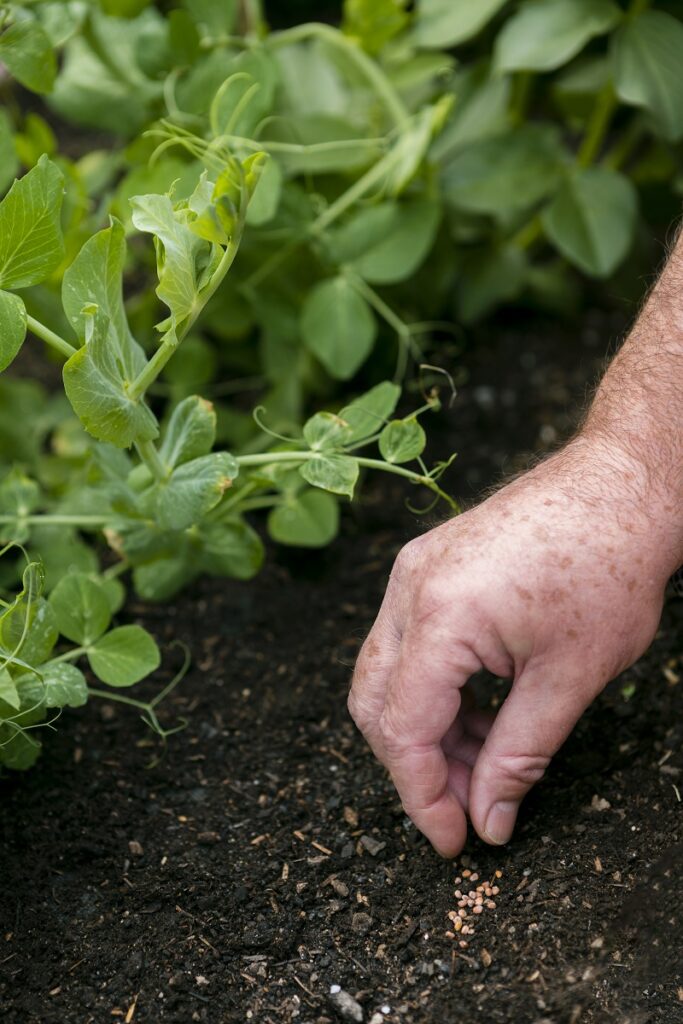
How to Grow Radishes: Step-by-Step Planting Guide
Follow these detailed steps for consistently successful radish crops.
Step 1: Timing Your Planting
Spring Planting Strategy:
- Start as soon as soil can be worked (soil temperature 40°F+)
- 4-6 weeks before last frost date is ideal
- Continue succession planting every 10-14 days
- Stop planting when daytime temperatures consistently exceed 75°F
Fall Planting Strategy:
- Calculate backwards from first fall frost date
- Plant so radishes mature before hard freeze
- Start 6-8 weeks before frost (earlier for winter varieties)
- Fall crops often have best flavor (cooler temperatures)
Succession Planting for Continuous Harvest:
- Plant small amounts frequently rather than large single planting
- Every 10-14 days maintains constant supply
- Plant ¼ to ½ of your total desired space each time
- Stops when conditions become unfavorable
Step 2: Direct Seeding (Never Transplant!)
Radishes must be direct seeded—they don’t tolerate transplanting due to sensitive taproots.
Seeding Procedure:
Row Planting:
- Create shallow furrows ½ inch deep
- Space rows 6-12 inches apart
- Drop seeds ½ to 1 inch apart in furrow
- Cover with ½ inch fine soil
- Firm soil gently with hand or board
- Water gently but thoroughly
Bed Planting (Intensive Method):
- Broadcast seeds across bed
- Rake lightly to cover
- Or plant in offset rows 4 inches apart
- Thin to proper spacing after germination
Container Planting:
- Fill container with quality potting mix
- Scatter seeds across surface
- Cover with ¼ inch mix
- Keep consistently moist
Seeding Depth: ½ inch (¼ inch in heavy soil, ¾ inch in sandy soil)
Seed Spacing: Sow ½ to 1 inch apart (thin to 2-3 inches after emergence)
Germination:
- Timeframe: 4-7 days
- Soil temperature: 45-85°F (optimal 55-75°F)
- Keep soil consistently moist (critical for germination)
Pro Tip: Radish seeds are large enough to handle individually, allowing precise spacing and reducing thinning needs.
Step 3: Thinning for Optimal Growth
Proper thinning is crucial for developing well-formed radish roots.
Why Thinning Matters:
- Crowded radishes compete for nutrients, water, and space
- Results in small, misshapen, or non-existent roots
- All tops, no bottoms
When to Thin:
- Wait until seedlings are 1-2 inches tall
- Usually 7-10 days after emergence
- Earlier than true leaf stage if severely crowded
How to Thin:
Method 1 (Preferred): Use small scissors to snip unwanted seedlings at soil level
- Doesn’t disturb remaining roots
- Quick and precise
Method 2: Carefully pull excess seedlings
- Grasp at base, pull straight up gently
- Avoid disturbing nearby seedlings
- More time-consuming but allows eating thinned greens
Final Spacing:
- Spring radishes: 2-3 inches apart
- Large varieties: 3-4 inches apart
- Winter radishes: 4-6 inches apart
Don’t Waste Thinnings: Baby radish greens are delicious in salads!
Step 4: Watering for Quality Radishes
Consistent moisture is perhaps the single most important factor for quality radishes.
Watering Guidelines:
Frequency:
- Keep soil consistently moist (like a wrung-out sponge)
- Generally every 2-3 days (more in hot weather, less if cool/rainy)
- Increase frequency as roots swell
Amount:
- Approximately 1 inch per week
- More in hot, dry conditions
- Less in cool, humid periods
Critical Periods:
- Germination: Never let soil surface dry
- Root development (week 2-4): Most critical for quality
Watering Methods:
Hand Watering:
- Use watering can or hose with soft spray
- Water at soil level (avoid wetting foliage)
- Morning watering preferred
Drip Irrigation:
- Ideal for consistent moisture
- Reduces disease from wet foliage
- Water efficient
Soaker Hoses:
- Good alternative to drip
- Delivers water directly to root zone
Sprinkler/Overhead:
- Acceptable if necessary
- Water early morning (foliage dries quickly)
- Can promote leaf diseases if watered late
Problems from Improper Watering:
Too Little Water:
- Woody, fibrous texture
- Excessively hot/spicy flavor
- Slow growth
- Cracking when water finally applied
Inconsistent Water:
- Cracked, split roots
- Pithy texture
- Poor quality
Too Much Water:
- Rotting
- Disease issues
- Poor flavor (diluted)
Fertilizing Radishes
Radishes have modest fertility needs; avoid over-fertilization.
Pre-Planting Fertility
Soil Preparation:
- Incorporate 1-2 inches of finished compost
- OR apply balanced fertilizer (10-10-10) at label rates
- Avoid fresh manure (causes forked, hairy roots)
Side-Dressing (Usually Unnecessary)
Most radishes mature before side-dressing benefits appear.
When to Consider:
- Winter radishes (longer growing period)
- Poor soil fertility
- Yellowing foliage indicating deficiency
Application:
- Light application of compost tea or dilute fish emulsion
- Apply 2 weeks after emergence if needed
Nitrogen Caution
Avoid Excess Nitrogen:
- Causes excessive leaf growth
- Reduced root development (“all tops, no bottoms”)
- Delays maturity
- Reduces quality
Signs of Excess Nitrogen:
- Dark green, lush foliage
- Small or non-existent roots
- Slow bulbing
Harvesting Radishes at Peak Quality
Timing harvest correctly ensures the best flavor and texture.
Determining Harvest Readiness
Visual Indicators:
- Bulb shoulders visible above soil
- Appropriate size for variety (usually ¾ to 1½ inches diameter)
- Firm, smooth skin
- Vibrant color
Size Guidelines by Type:
- Spring radishes: ¾ to 1 inch diameter
- Standard radishes: 1 to 1½ inches diameter
- Winter radishes: 2 to 4 inches diameter
Days to Maturity:
- Check seed packet information
- Start checking a few days before listed maturity
- Test-pull one to assess size and quality
The “Pull and Check” Method:
- Gently pull one radish
- Assess size, color, texture
- If good, harvest others of similar size
- If small, wait a few more days
Harvest Timing is Critical
Don’t Wait Too Long:
Radishes decline rapidly past peak maturity.
Problems from Delayed Harvest:
- Woody, fibrous texture
- Pithy (hollow) centers
- Excessively hot/pungent flavor
- Cracking and splitting
- Bolting (flowering)
Rule of Thumb: It’s better to harvest slightly early than too late.
Proper Harvesting Technique
Steps:
- Loosen soil around radishes if necessary (hand fork)
- Grasp foliage near crown (where greens meet root)
- Pull straight up with gentle, steady pressure
- Avoid twisting (can break greens from root)
For Easier Pulling:
- Water day before harvest (softens soil)
- Harvest when soil is moist but not muddy
- Use hand fork to loosen if soil is compacted
Post-Harvest Handling
Immediate Care:
- Remove excess soil (brush or rinse gently)
- Trim roots to ¼ inch (optional, extends storage)
- Leave greens attached (for market/gift) OR remove for longer root storage
- Cool quickly (remove field heat)
Storage:
Short-Term (1-2 weeks):
- Refrigerate at 32-40°F
- High humidity (90-95%)
- Perforated plastic bags or damp towel
- Remove greens for longer storage (they draw moisture from roots)
Longer-Term (3-4 weeks):
- Winter radishes only
- Remove all foliage
- Store in damp sand or sawdust
- Root cellar (32-40°F, high humidity)
- Check regularly, remove any deteriorating roots
Market Presentation:
- Bunch with rubber band or twine
- Leave attractive greens attached
- Clean but not overly washed
- Uniform size within bunches
Popular Radish Varieties for Different Uses
Choosing appropriate varieties expands your options and harvest windows.
Spring/Summer Radishes (Fast-Maturing)
Cherry Belle:
- Classic round red radish
- 22-25 days
- Mild flavor, crisp texture
- Reliable producer
- Best all-around choice
French Breakfast:
- Oblong shape, red with white tip
- 23-28 days
- Mild, sweet flavor
- Eye-catching appearance
- Excellent for markets
Easter Egg:
- Mixed colors (red, purple, pink, white)
- 25-30 days
- Novelty appeal
- Great for kids and markets
- Mild flavor
Sparkler/Scarlet White Tip:
- Round, red with white bottom
- 25 days
- Classic appearance
- Reliable and popular
Specialty and Unique Varieties
Watermelon Radish:
- Green outside, vibrant pink inside
- 55-65 days
- Mild, sweet flavor
- Stunning in salads
- Premium pricing potential
Purple Plum:
- Deep purple skin and flesh
- 28-35 days
- Sweet, mild flavor
- Retains color when cooked
- Market differentiation
White Icicle:
- Long, tapered white radish
- 25-30 days
- Crisp, mild flavor
- Less pungent than red varieties
- Good heat tolerance
Winter Radishes (Larger, Storage Types)
Daikon:
- Large, white, carrot-shaped
- 50-70 days
- Mild flavor, versatile use
- Excellent fresh or pickled
- Asian cuisine staple
Black Spanish Round:
- Black skin, white flesh
- 55-65 days
- Pungent when raw, mellows when cooked
- Excellent storage (3-4 months)
- Unique market offering
China Rose:
- Rose-red skin, white flesh
- 50-60 days
- Mildly pungent
- Good storage
- Beautiful color
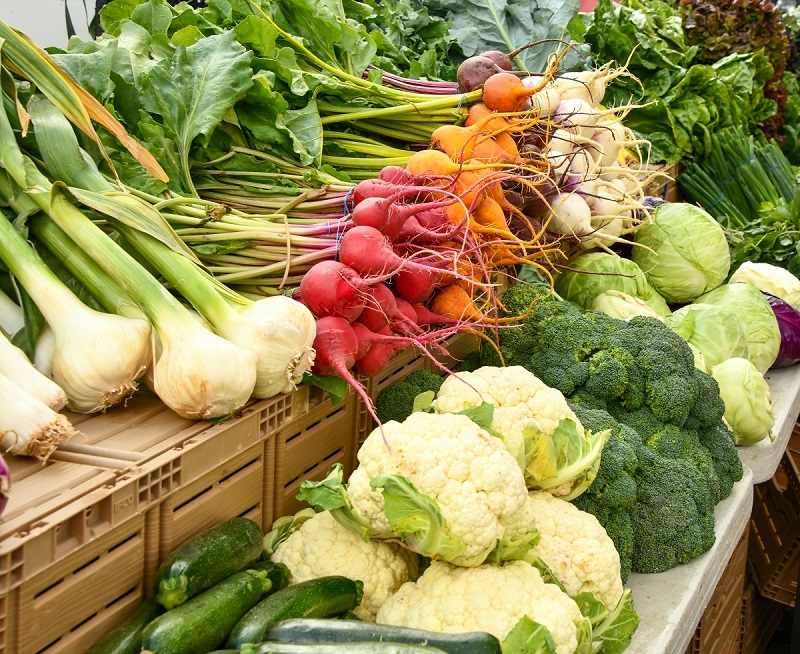
Common Problems and Solutions
Even easy crops like radishes occasionally face challenges.
Problem: All Tops, No Bottoms
Causes:
- Excessive nitrogen
- Overcrowding (inadequate thinning)
- Too much shade
- Wrong variety for conditions
Solutions:
- Reduce nitrogen fertilization
- Thin properly to 2-3 inches
- Ensure 6+ hours sun
- Choose appropriate varieties
Problem: Woody, Pithy Texture
Causes:
- Harvest too late
- Hot weather
- Inconsistent watering
- Poor variety choice
Solutions:
- Harvest promptly at maturity
- Plant during cool seasons
- Maintain consistent moisture
- Choose heat-tolerant varieties for warmer periods
Problem: Cracked or Split Radishes
Causes:
- Inconsistent watering (dry then wet)
- Delayed harvest
- Heavy rain after dry spell
Solutions:
- Maintain consistent soil moisture
- Mulch to moderate moisture fluctuations
- Harvest promptly
Problem: Hot, Excessively Pungent Flavor
Causes:
- Heat stress
- Water stress
- Overmature
- Varietal characteristic
Solutions:
- Plant during cooler seasons
- Provide consistent water
- Harvest at proper maturity
- Try milder varieties
Problem: Poor Germination
Causes:
- Old seeds (low viability)
- Soil too dry
- Planted too deep
- Soil temperature too cold or hot
- Crusted soil surface
Solutions:
- Use fresh seeds (radish seeds viable 4-5 years if stored properly)
- Keep soil consistently moist during germination
- Plant at proper depth (½ inch)
- Wait for appropriate soil temperature
- Cover with fine compost (prevents crusting)
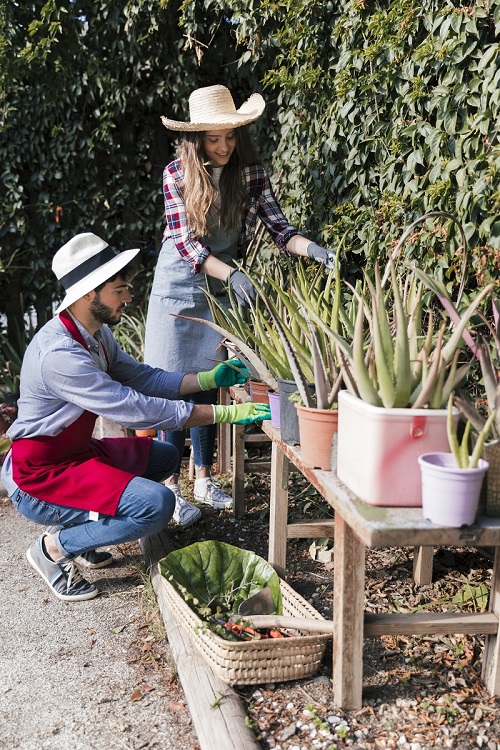
Creative Ways to Use Radishes
Don’t limit radishes to salads—explore their versatility.
Fresh Applications
Salads:
- Slice thin for classic garden salads
- Julienne for coleslaws
- Dice for grain salads
- Whole baby radishes for crudités
Sandwiches and Tacos:
- Add crunch to sandwiches
- Quick-pickle for tacos
- Butter and salt on baguette (French classic)
Cooked Preparations
Roasting:
- Toss with olive oil, salt, pepper
- Roast at 425°F for 20-25 minutes
- Mellows flavor, caramelizes slightly
- Surprisingly delicious!
Sautéing:
- Quarter and sauté in butter
- Add to stir-fries
- Combine with greens
Braising:
- Braise in broth or wine
- Becomes tender and mild
- Elegant side dish
Preserving
Quick Pickles:
- Slice and cover with vinegar brine
- Add spices (mustard seed, dill, peppercorns)
- Ready in 24 hours, keeps 2-3 weeks refrigerated
Fermentation:
- Lacto-ferment for probiotic-rich condiment
- Traditional in Korean and Japanese cuisine
Freezing:
- Not recommended for raw radishes
- Can freeze cooked/roasted radishes
Don’t Forget the Greens!
Radish greens are completely edible and nutritious.
Uses:
- Sauté like spinach or kale
- Add to soups and stews
- Blend into pesto
- Include in smoothies (strong flavor, use sparingly)
- Stir into fried rice
Nutrition: Higher in vitamin C, calcium, and iron than roots!
Growing Radishes Commercially
For market farmers, radishes offer excellent opportunities.
Market Potential
Revenue Opportunities:
- High turnover (4-6 crops/season)
- Early season when little else available
- Premium for specialty/colored varieties
- Bunching adds value
- Microgreens option (radish sprouts)
Example Production:
- 100 sq ft bed
- Plant every 2 weeks
- 8-10 plantings per season
- 60-80 bunches per planting
- $3/bunch = $1,440-2,400 per 100 sq ft annually
Production Tips
Succession Planting:
- Small, frequent plantings
- Maintains consistent supply
- Reduces waste
- Matches market demand
Specialty Varieties:
- Watermelon radishes ($4-6/bunch)
- French Breakfast (visual appeal)
- Mixed color bunches
- Daikon for Asian markets
Presentation Matters:
- Uniform bunches
- Clean but not over-washed
- Attractive greens attached
- Rubber band or twine
- Clear varietal labeling
Market Channels:
- Farmers’ markets (highest price)
- Restaurant sales (consistent volume)
- CSA shares (reliable outlet)
- Grocery stores (larger volume, lower price)
Frequently Asked Questions About Growing Radishes
Can I grow radishes in containers?
Yes! Radishes are perfect for containers. Use pots at least 6 inches deep and 10+ inches wide with good drainage. Container growing actually works better than many in-ground situations if soil is heavy.
Why are my radishes all leaves and no root?
Common causes include too much nitrogen fertilizer, inadequate thinning (overcrowding), insufficient sunlight, or planting during hot weather. Ensure proper spacing and avoid high-nitrogen fertilizers.
When is the best time to plant radishes?
Early spring (4-6 weeks before last frost) and fall (6-8 weeks before first frost) provide ideal conditions. Radishes prefer cool weather (50-65°F) for best quality.
How do I know when radishes are ready to harvest?
Check for visible bulb shoulders above soil and refer to days-to-maturity on seed packet. Pull one to test—if it’s the right size (usually ¾ to 1½ inches) with good color and firm texture, harvest the rest.
Can I save radish seeds?
Yes, but radishes cross-pollinate easily, so isolate varieties by 1/4 mile or grow only one variety for seed. Allow plants to flower and form seed pods, then collect when pods dry and turn brown.
Why are my radishes hot and woody?
This results from heat stress, water stress, or harvesting too late. Plant during cooler seasons, maintain consistent moisture, and harvest promptly at maturity for best flavor and texture.
Conclusion: Start Growing Radishes Today
Radishes deserve a place in every vegetable garden—beginner or expert, small space or large farm. Their combination of rapid growth, minimal care requirements, pest resistance, and versatility makes them among the most reliable and rewarding crops you can grow.
Key Takeaways:
✓ Lightning fast: Harvest in 25-40 days from seed
✓ Minimal space: Productive in containers, small beds, or intercropped
✓ Easy care: Resist most pests, tolerate various conditions
✓ Succession plant: Small, frequent plantings provide continuous harvest
✓ Cool season crop: Plant spring and fall for best quality
✓ Versatile use: Fresh, cooked, pickled, plus edible nutritious greens
Whether you’re a first-time gardener seeking quick success, a homesteader wanting fresh produce, or a market farmer looking for profitable quick-turnover crops, radishes deliver consistent results with minimal investment of time, space, or money.
Start your radish adventure this week. Prepare a small bed or container, sow a few seeds, and in less than a month, you’ll be crunching into crisp, peppery radishes grown with your own hands. That first harvest will convince you why radishes have been garden staples for thousands of years—they simply work.
Ready to grow radishes? Pick up some seeds this weekend and get planting. Your garden—and your salad bowl—will thank you!
What’s your favorite radish variety or recipe? Share in the comments below! We’d love to hear your radish growing tips and success stories.


